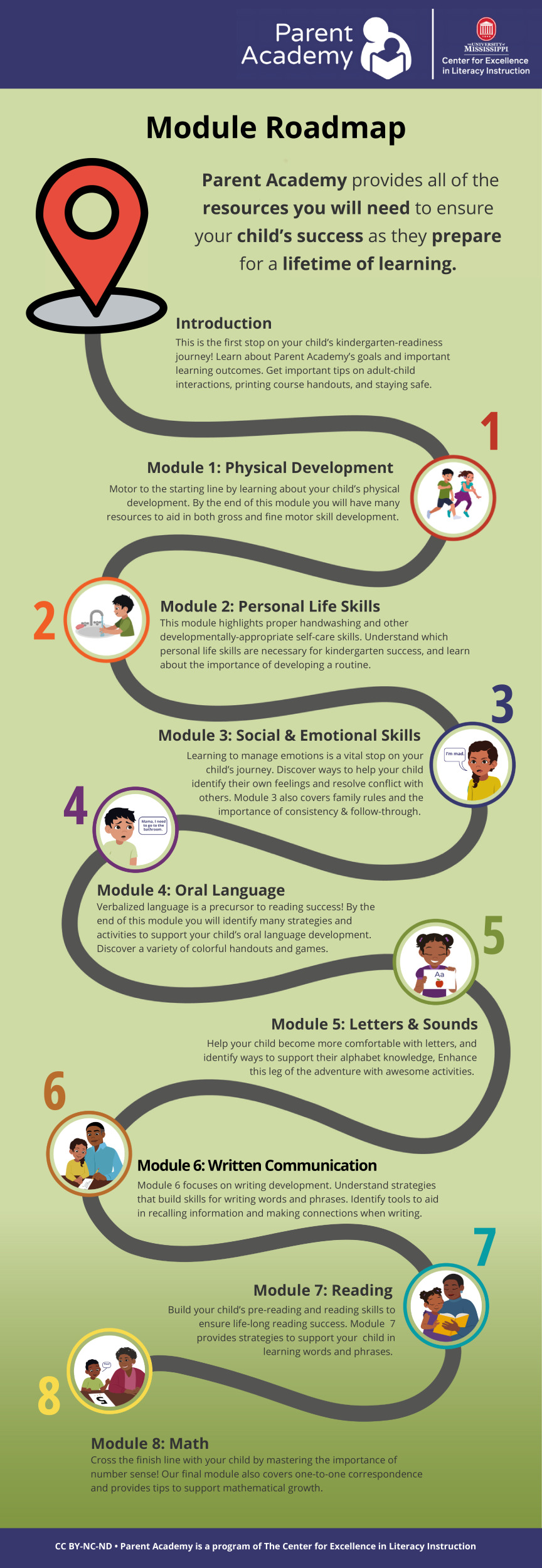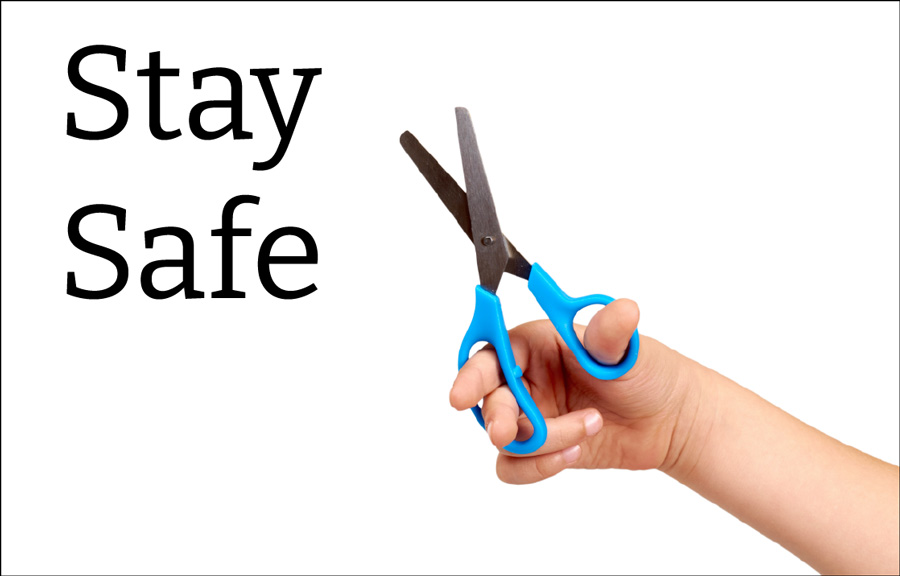INTRODUCTION
Welcome to Parent Academy!
The Parent Academy was developed to equip parents or any caregiver of rising kindergarteners with the knowledge to work on kindergarten readiness skills with their child before they start school.
Parent Academy is divided into eight small hands-on modules. Each module covers a few kindergarten readiness skills and provides some simple hands-on activities and suggested materials that parents or caregivers can use to support their child’s development and prepare them for kindergarten.
Parent Academy Learning Outcomes
Learning outcomes are often included to inform learners what they will be learning and what they should know or be able to do at the end of the program. Take some time to read over the learning outcomes below and at the start of each module.
By the end of Parent Academy participants will be able to:
- Recognize that kindergarten readiness activities into your daily routine. [CHECK]
- Understand the importance of repetition for the mastery of kindergarten readiness skills.
- Understand the importance of adult-child interactions in kindergarten readiness activities.
- Recognize that all children develop at different paces.
- Identify resources and seek support when concerned about child development.
- Understand that early literacy skills begin to develop before children enter school and parents/caregivers are a child’s first teacher.

Download the above Course Roadmap infographic.
Understand the importance of adult-child interactions
Learning requires lots of practice with monitoring and support. Interactions between children and adults provide lots of learning opportunities and benefits.
You might say, “I’m not a teacher!” but the first relationships children establish are with their parents. Before entering school, children can learn and practice many skills they will need at school and later in life.
Children learn to trust, to become more confident, to develop strong language skills, and how to communicate and show respect for others by interacting with their parents. The more children communicate with adults, the stronger their vocabulary and comprehension become. Parents, and the family as a whole, are the most important parts of a child’s preparation for kindergarten.
Parent Academy Families
A family is a group of people related by birth, marriage, or adoption. Any person related to you is considered a member of your family. Families can look very different, but all family members usually love and care for each other very much.
Some families may not look like what you typically think of when you hear the word family. However, we understand that families come in all shapes and sizes. These families will help us explain concepts and share how they are getting their children “ready” for kindergarten.
Module Structure and Icons
You will see several ICONS used on this website. Let’s look at them so that you can be familiar with them.
You will see the “What does it look like?” ICON ![]() at the beginning of modules or sections. It gives you a list of things that your child will be able to do when that skill is mastered.
at the beginning of modules or sections. It gives you a list of things that your child will be able to do when that skill is mastered.
Sometimes you will see the “Supplies” ICON ![]() at the beginning of an activity description. You will find the list of materials needed to complete the activity. If you attended the in-person sessions, many of the materials or supplies were provided for you.
at the beginning of an activity description. You will find the list of materials needed to complete the activity. If you attended the in-person sessions, many of the materials or supplies were provided for you.
When you see a note with a push pin like this ![]() , there will be a phrase or sentence that we want you to remember.
, there will be a phrase or sentence that we want you to remember.
Have Fun Remember to Be Safe!

The activities in these modules are fun and can help you support your child’s development. Remember that they are designed to be done WITH your child under your supervision. Some of the activities can pose safety issues if your child is left alone. For example, the beading activity in Module 1 contains small beads, and the Cup Game uses small objects. Because 3 and 4-year-old children sometimes tend to put things in their mouths, these activities can be a choking hazard if your child is doing this activity unattended. Therefore, it is very important that you do these activities with your child and put them out of reach when you are not using them.
Another fun activity that can be unsafe if your child is left alone is cutting with scissors. Children need to learn to use scissors correctly but they should be used with caution. Teach the proper way to use them and make sure you never leave your child unattended when they are doing a cutting activity.
Here are a few tips:
- Always supervise your child and always use safety scissors designed for children. These scissors have a rounded or blunt tip.
- Explain that scissors are used for cutting paper only (not clothing, hair, or books).
- Teach them that scissors are sharp and that they should always sit while using scissors and never run.
- Store scissors with blades down and out of reach when they are not being used.
One last thing, have fun and be safe!
A Note on Printing Handouts
There are numerous handouts throughout the modules and you will be able to download and save all of them for reference. If you would like to print them out, be sure and select in your printing dialog box to “fit to page” so it doesn’t cut the content off at the edges. All printers have at least a 1/4 inch border around the paper where it cannot print ink.
Summary
All children develop at different paces, so if your child isn’t where their siblings were at this age, or isn’t where a friend’s child is—be patient. However, if there are some major red flags, or you think there is a problem, feel free to consult with your child’s pediatrician and they can help you find the right resources.
Remember, learning occurs long before your child enters a school building. You are your child’s first teacher, and our Parent Academy will provide you with content and equip you with activities to support your child’s development and get “ready” for kindergarten. So, let’s get started and get your child kindergarten ready!
